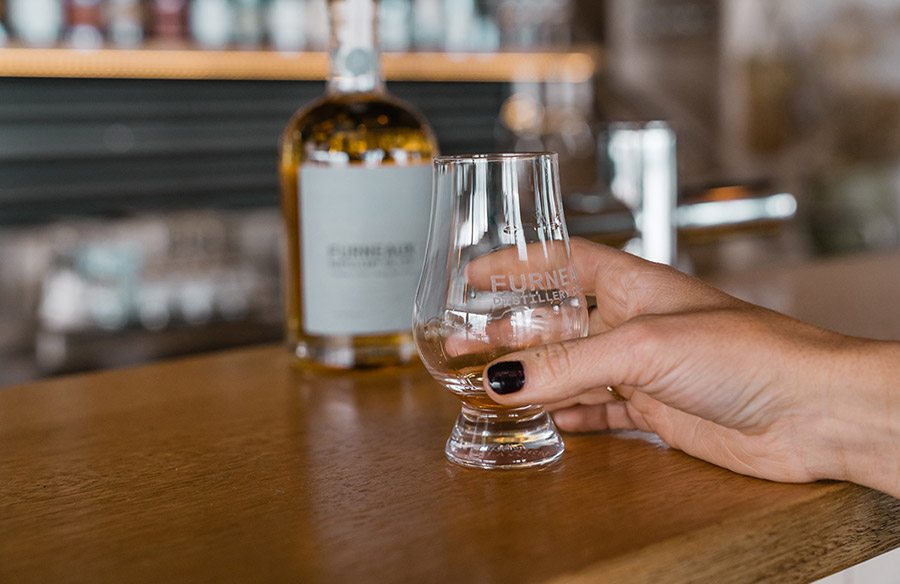Enjoying whisky is a personal journey and there’s no one right way to drink one. Whether you like it neat, on the rocks, or in a classic cocktail, drink it however you like and don’t let anyone tell you that you’re wrong. However, if you really want to “taste” and fully enjoy drinking whisky then a little bit of know-how wouldn’t hurt. Today we’ll take you through the basics on How To Drink Whisky featuring Tom Ambroz of Furneaux Distillery.
Appearance
The appearance of the whisky dictates the way you’ll experience it, at least flavor-wise. Often, a darker whisky is associated with being aged in the casks for longer periods; and a dark red/amber hue means that the barrel used had something in it like a port or sherry which translates to a more sweet or spicy style. On the other hand, if the whisky is completely clear, it probably means it has spent no time in the barrel and can’t even be considered a whisky at all.
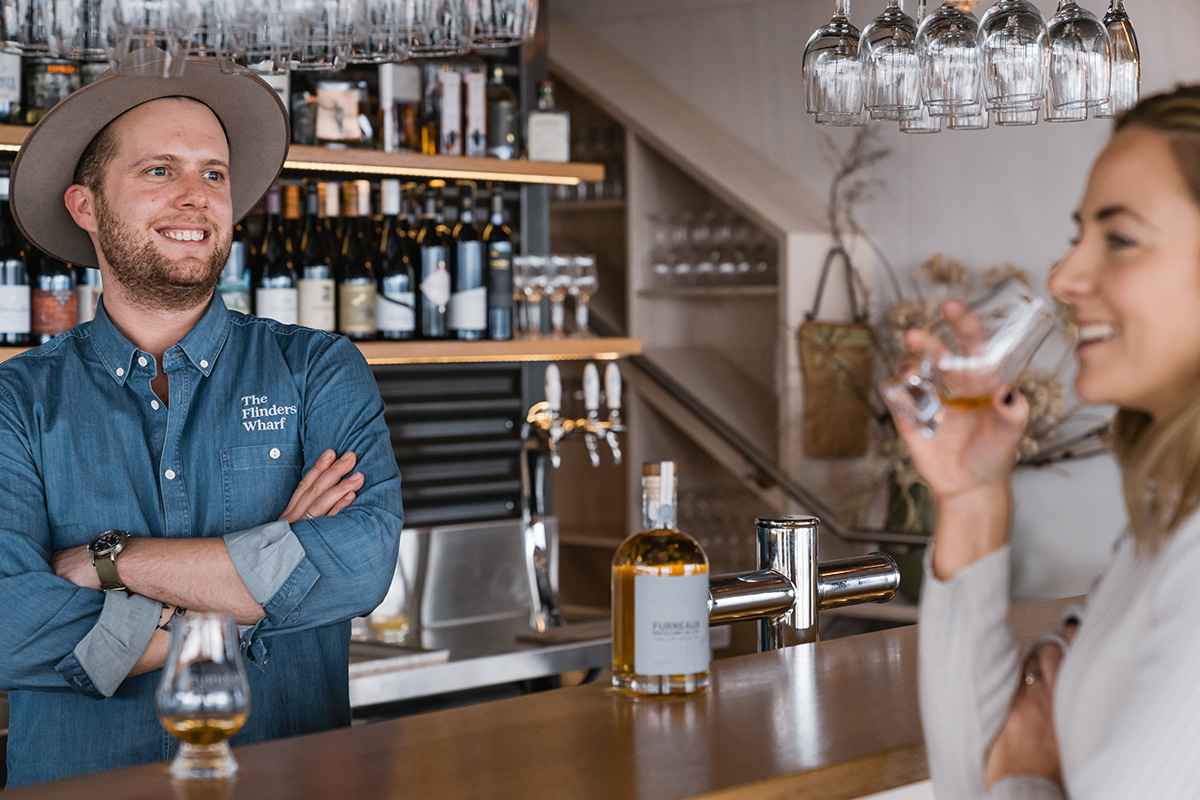
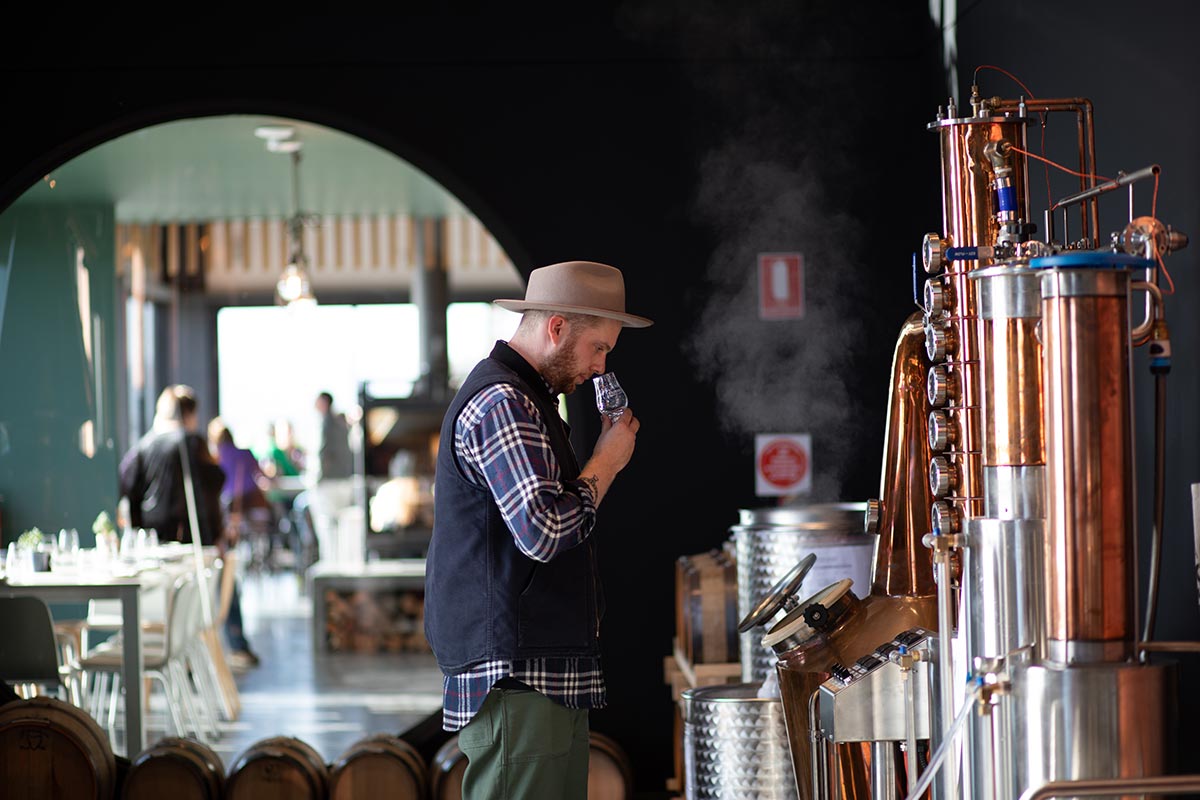
Nosing
When nosing whisky, what you want to be looking out for is a really big and bright aroma. A lot of people like to make cask strength whisky which is straight out of the barrel so you must be very careful to not stick your nose directly into the glass because the high alcohol content in the whisky will probably overpower your senses, and dull your nose. What you’re going to smell is going to be dictated by what you’ve smelled in the past, but there will be certain tasting notes that come up quite commonly. Whisky is made from barley that’s quite sweet so you’ll get a lot of sweeter notes like caramel and sugars and other similar aromas.
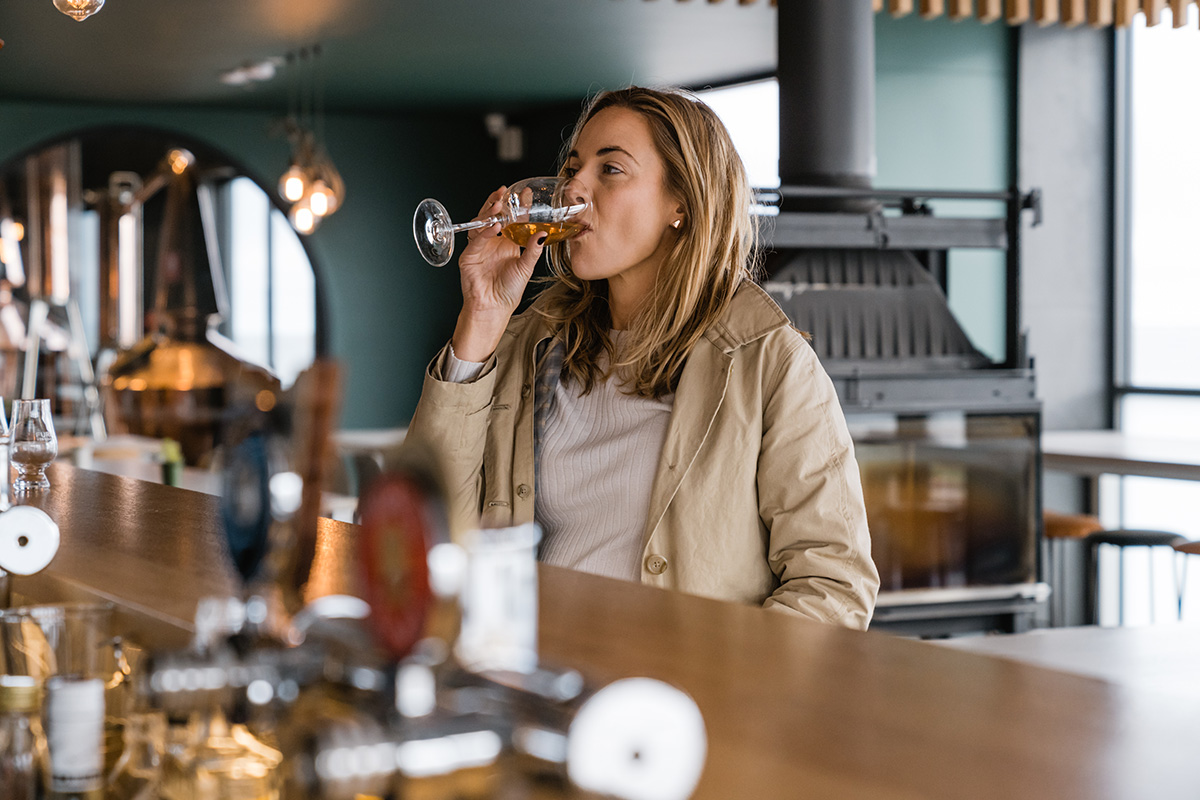
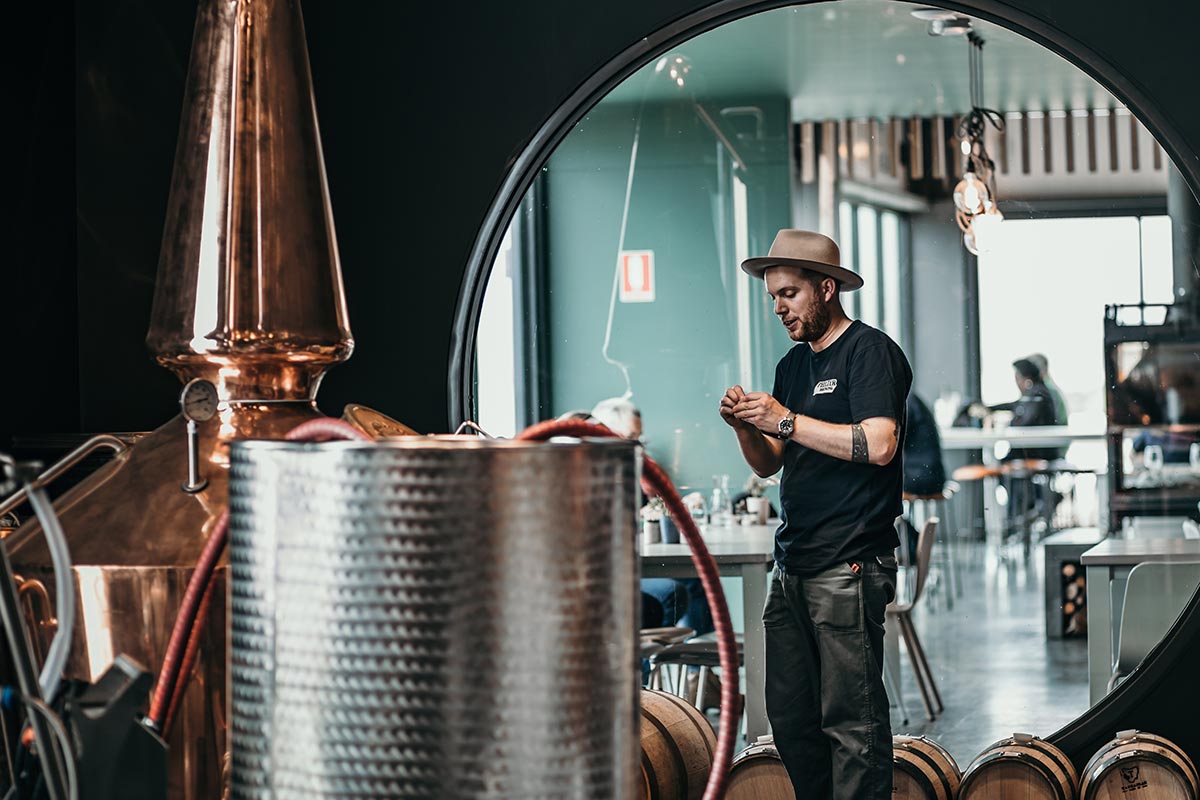
Tasting
When tasting whisky, it’s ideal to take small sips at a time so you can really have that liquid spread out across your palette and you can experience all the different kinds of flavour. Sometimes people in the tasting part would like to purse their lips a little bit and draw a bit of air in to try and aerate the whisky and really kind of help it spread out the flavour.
“What we’re using to taste our whisky is called a Glencairn glass. Glencairn is a place in Scotland that makes tasting glasses that are used all over the world for whisky tasting and they’re designed to be bulbous at the bottom so the whisky can breathe a little bit and it has a fluted nose where you get to capture all that aroma.” – Tom Ambroz, Furneaux Distillery
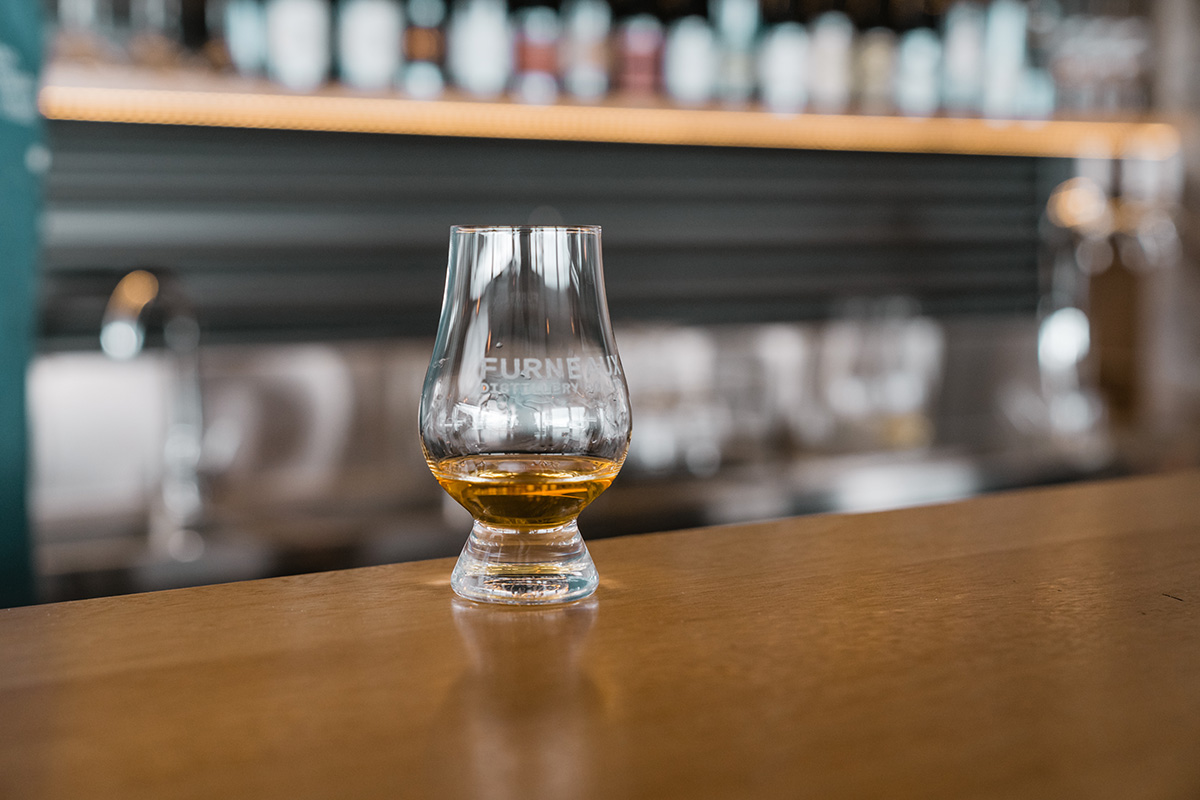
How Ice & Water Affect Whisky
There are two common additions to whisky: water and ice. Water can be quite a beneficial thing to whisky. Coming out of the barrel, whisky can sometimes be about 70% so what everyone will do unless they’re making a cask strength whisky is dilute it. A lot of the time people’s palettes would prefer the whisky at a different strength, maybe stronger, maybe even weaker. So what a lot of people like to do is test that level by adding a couple of drops of water at a time which kind of helps the whisky to open up in a way.
When it comes to having ice, it can have two effects: one is it cools down the whisky, so if you’re on a really hot day and if you want to drink a whisky then that might be a great thing for you; but when you cool down the whisky, a lot of the flavour compounds that are loose at room temperature starts to become a little bit condensed and you may miss some certain flavour profiles on your palette when your tasting.
“When drinking whisky, everybody has a great personal experience and there is no one right way to drink whisky. However, we’d like to kind of keep in mind that a lot of single malt whisky producers have taken a lot of time and a lot of effort to make their product absolutely perfect the way it is. So it’s always respectful, at least to the product, to taste it as it is before trying to do anything else with it.” – Tom Ambroz, Furneaux Distillery

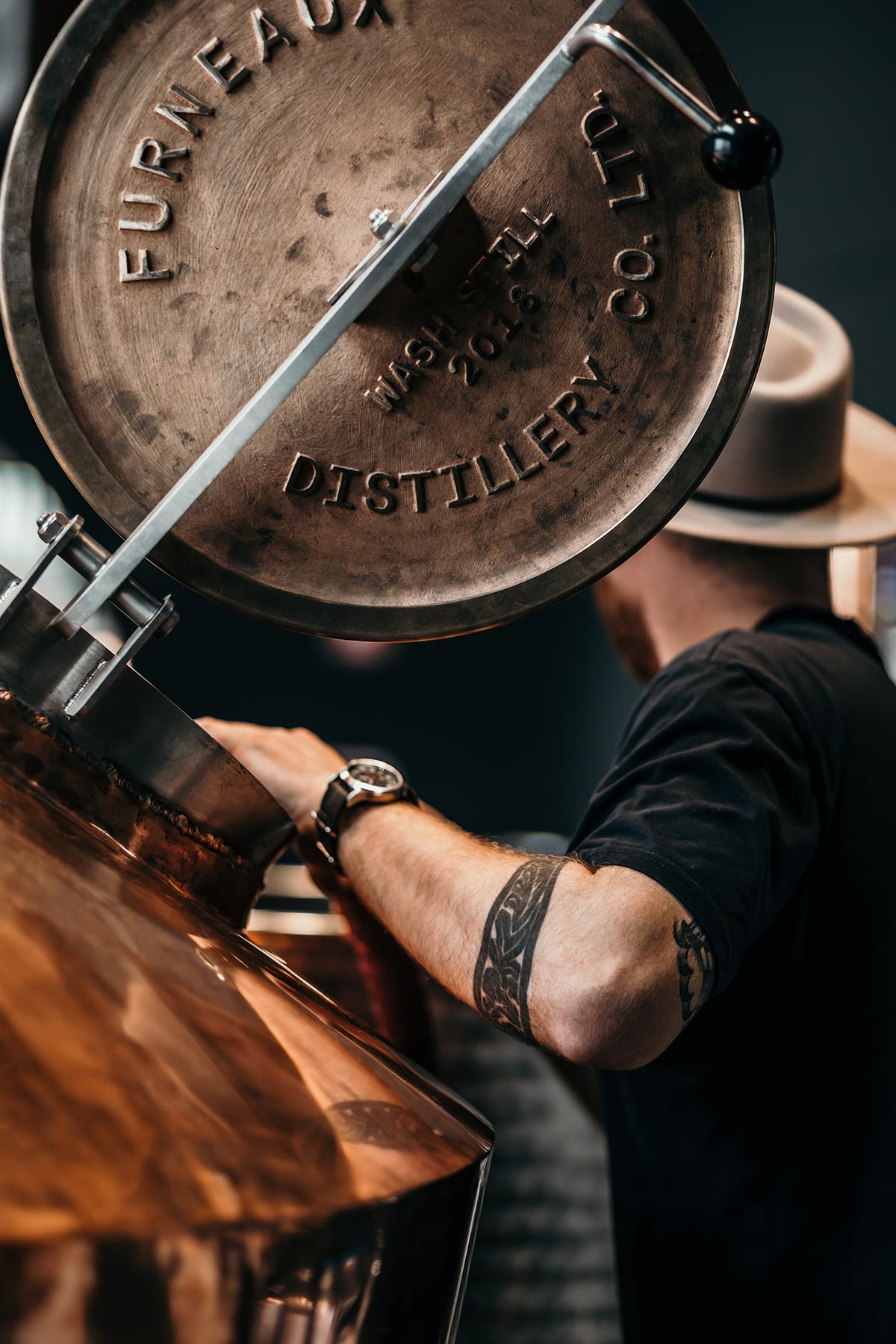
Furneaux Distillery located on Flinders Island in Tasmania is a new producer of small-batch craft spirits, single malt whisky, gin, and vodka, and was born from a love of whisky and a fascination with the art of distilling. Be sure to check out Tom’s Meet the Maker profile to find out a little more about him!



